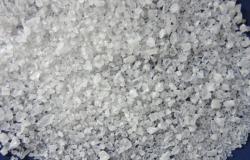- In theory, the Netherlands can become climate neutral in 2050 in the sense that our country will no longer emit any net greenhouse gases.
- But that will be an enormous challenge, concludes the Netherlands Environmental Assessment Agency.
- It will probably not work without the use of underground CO2 storage and biofuels.
- Also read: Can bamboo replace paper and plastic? And should it do that?
In theory it is possible. But the question is whether it will work. The Netherlands Environmental Assessment Agency came to this conclusion on Wednesday in a new report on the question of whether the Netherlands can be climate neutral by 2050. This means that our country emits no net greenhouse gases such as CO2.
With existing technologies it is possible to make the Netherlands climate neutral by 2050. Even if citizens’ behavior does not change “substantially”, this ultimate goal of the Climate Act can be achieved, according to the PBL.
“It is actually quite clear on the drawing board,” says PBL director Marko Hekkert, who is pleasantly surprised about this. According to the study, if the Netherlands uses the right ‘workhorses’ on a large scale, it can no longer add greenhouse gases to the atmosphere in a quarter of a century.
Use of underground CO2 storage and biofuel is necessary to eliminate net CO2 emissions
However, that is not easy: climate neutrality requires “a social transformation of unprecedented proportions”.
For example, the economy must largely move away from fossil fuels. Instead, much more sustainably generated electricity is needed in the first place. Bio raw materials and hydrogen will also soon require a multiple of what is currently available.
If that supply is disappointing, climate neutrality will only be achievable by storing enormous amounts of CO2 underground or by using significantly less energy. For example, by consuming much less, or no longer flying.
The researchers were curious whether it was also possible without these kinds of sacrifices. They conclude that this is possible on paper, provided the necessary techniques are deployed on a large scale. If measures are excluded or postponed, the legally established target for 2050 will quickly become out of reach. “The choices do not make everyone happy, but the space to find something of it is over. The entire palette is needed,” says Hekkert. “To achieve the climate goals, the next cabinet will also have to fully focus on the energy transition.”
Bio-raw materials and the capture and storage of CO2 play an important role in the research. Bio-raw materials can be plant residues, but also crops that are specially grown to make fuel for aircraft and ships, for example. CO2 released during production is quite pure and therefore relatively cheap to capture. Especially if a factory runs continuously, the price per captured megaton can be better than expected.
According to the researchers, the scarce bio-raw materials can best be used this way. Generating electricity with biomass “is not obvious”, they believe. The PBL therefore takes a more critical position than in previous publications.
READ ALSO: The Ocean Cleanup has recovered more than 10 million kilos of plastic: that’s about the weight of the Eiffel Tower
Tags: Netherlands climate neutral theory





